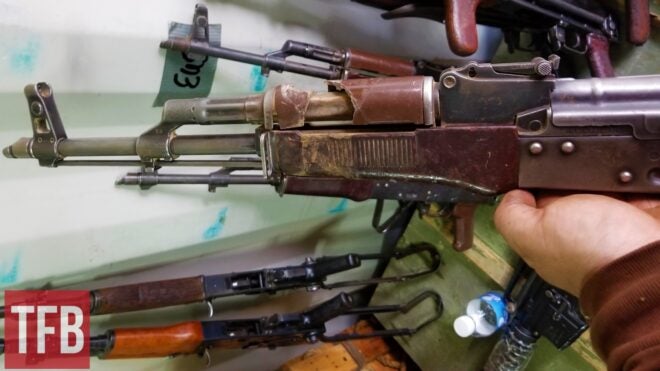AK rifle is often thought of as something crude and easy to produce with shabby craftsmanship performed by slave laborers in dystopian socialist factories. So many times I heard: “Oh, what do you expect, it is an AK”. That is why it is ever more interesting to look at East German AKs, produced in a country that for the last 100 years has been thought of as the synonym of quality products.
German-made cars, German-made industrial equipment, German-made guns from HK or Walther – their reputation speaks for itself.
That is why I was very excited when I came to Iraq and had a chance to inspect and repair a few hundred East German AKs that were used all over the country: from the border with Iran in Badra, which looks like a film set of Mad Max movie, to the lovely hills and planes of Kurdistan, oilfield wastelands around Basra and busy streets of Baghdad.
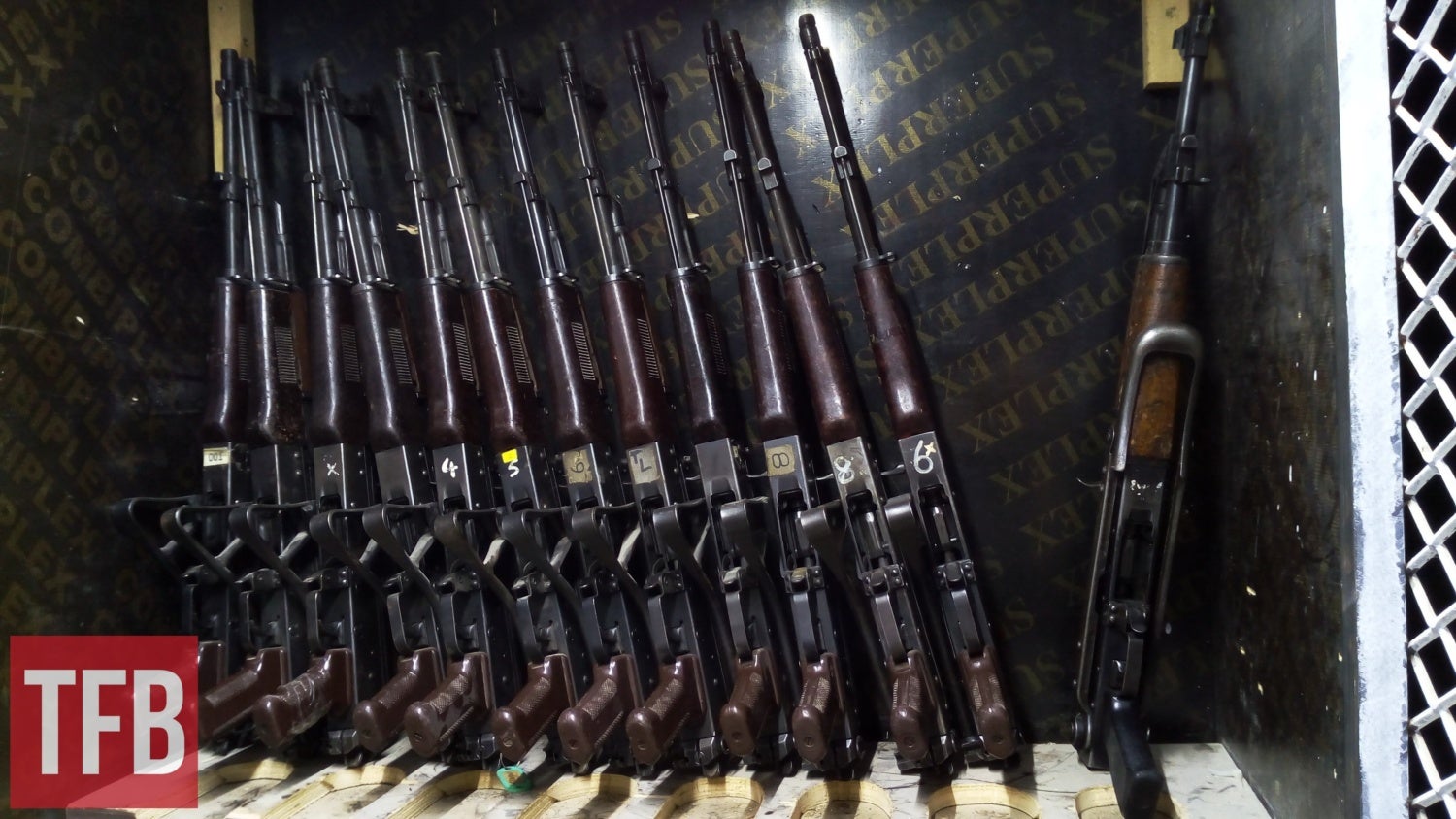
East German AKs in an armory in Iraq
History of East German AKs
After WW2, Germany was split into two states: West Germany with its capital in the city of Bonn, and East Germany (Deutsche Demokratische Republik, often called DDR). East Germany was essentially controlled by the Soviet Union and the DDR government had to carefully follow the general line of the Soviet Communist party.
A former enemy, East Germany quickly received from the USSR all the attributes of a proper Soviet puppet state: ever-vigilant secret police (Stasi), ruling socialist party, and technology transfers for armaments to make the country more self-reliant in case of inevitable World War 3.
At the time, the Soviet government was not concerned about the fact that other states would eventually become the competition in the international arms market. All Warsaw Pact countries had to work together as part of the military alliance, and arms trade in the Soviet Union wasn’t seen as a business, armaments were often given to less developed countries for free in exchange for political influence.
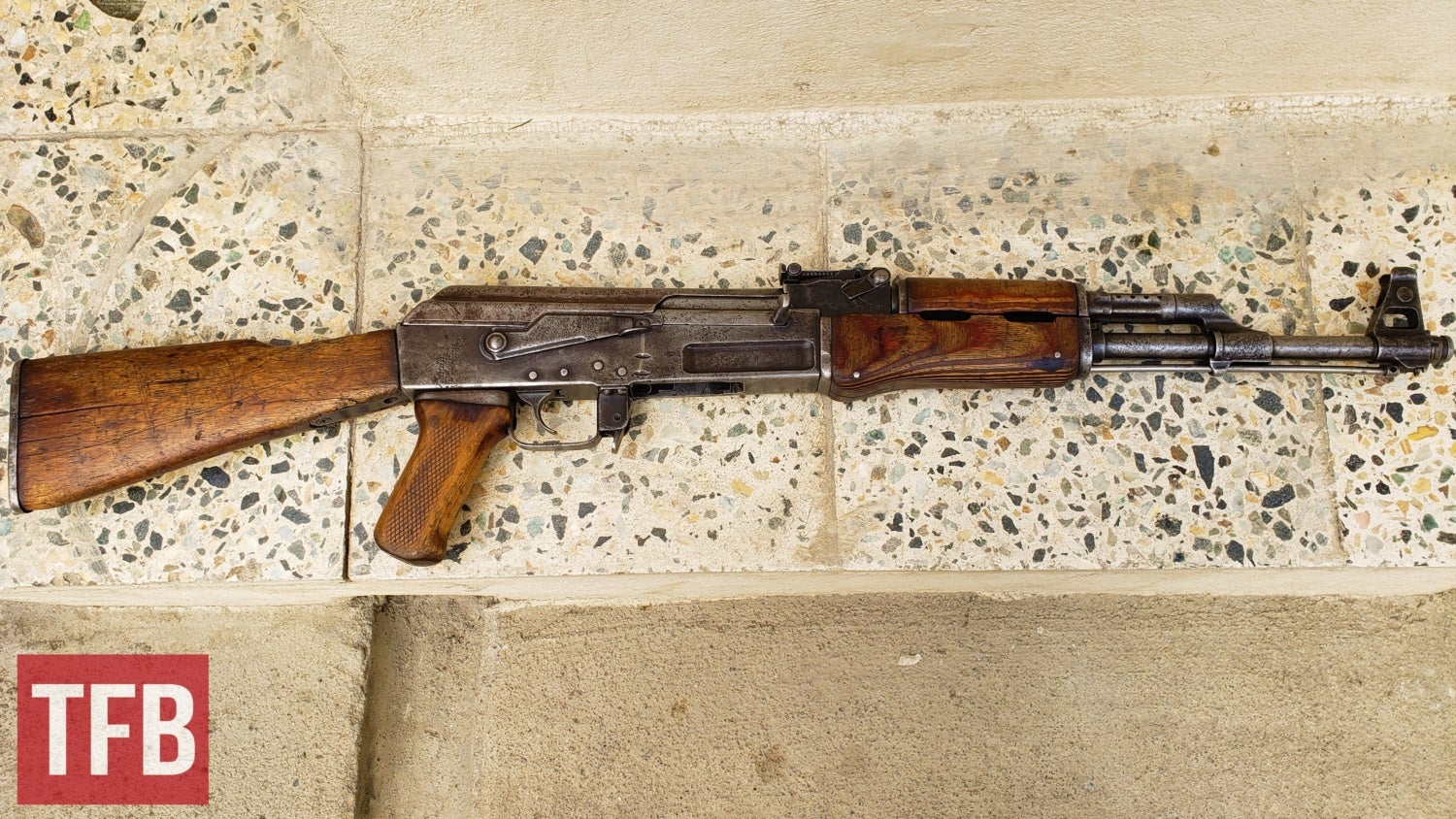
Type 3 AK – the first Kalashnikov that was produced outside of the Soviet Union
USSR started to transfer the technology of the AK rifle in 1955, and every year new socialist countries joined the club. In 1957, DDR started to negotiate the agreement for ToT (transfer of technology), and in 1958 German factory received the blueprints and produced the first prototypes of milled receiver Type 3 AK. The first batch of East German AKs was called “Nullserie” (Zero Series). Those prototype guns had a very peculiar sling mount on a wooden stock.
Manufacturing commenced at two factories: first at the Wiesa factory in the South of East Germany and later at the city of Suhl at the factory named after Ernst Thälmann, a German communist politician.
Production guns didn’t have a cleaning rod and the cleaning kit inside a wooden buttstock and had a big metal sling loop. Those guns, as well as other 7.62×39 East German AKs, all have the same identifying marks: letters D (Dauerfeuer) and E (Einzelfeuer) on the receiver for automatic and semi-automatic modes respectively, and letter N on the rear sight.
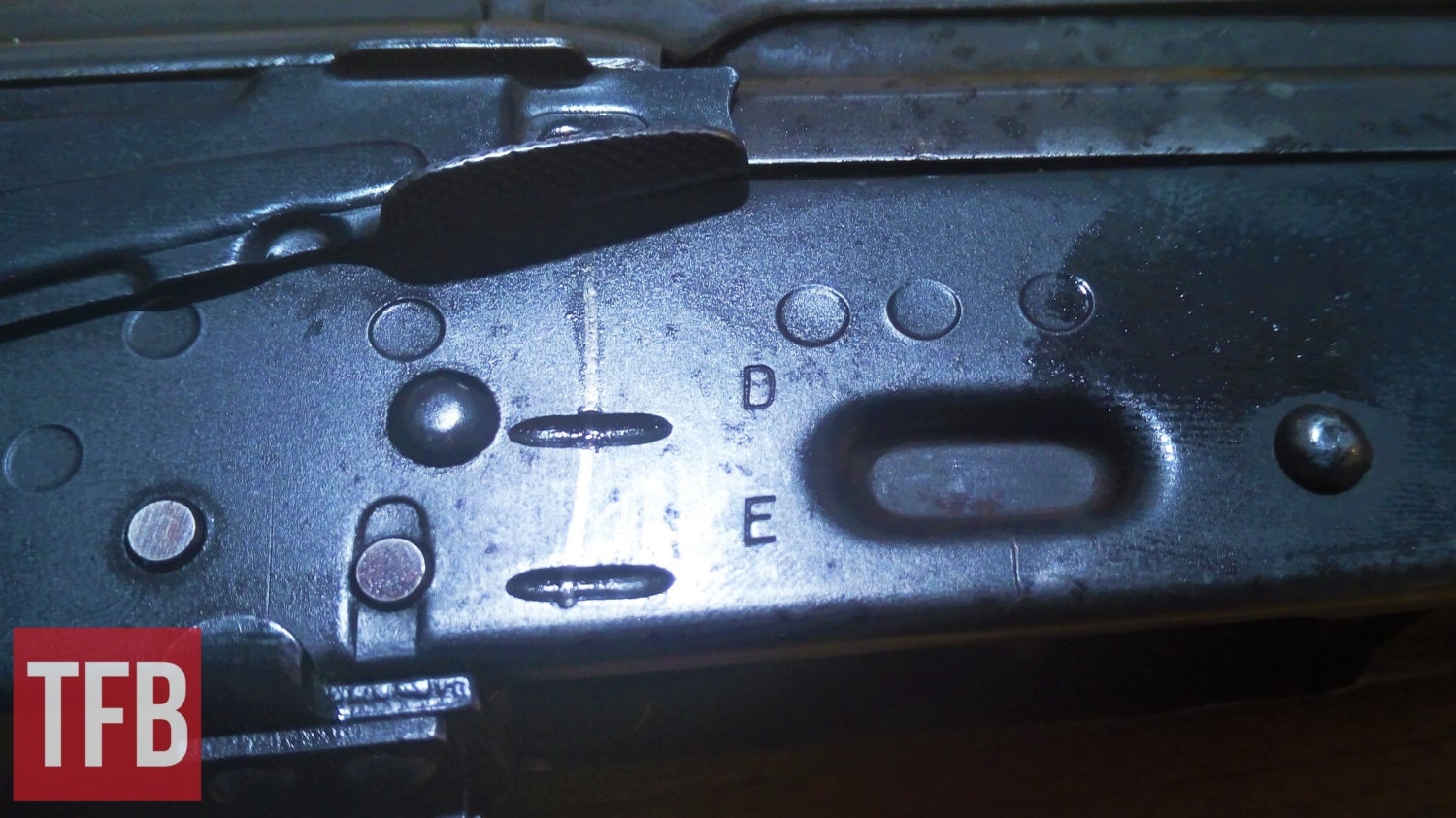
Selector markings of 7.62×39 East German AKs
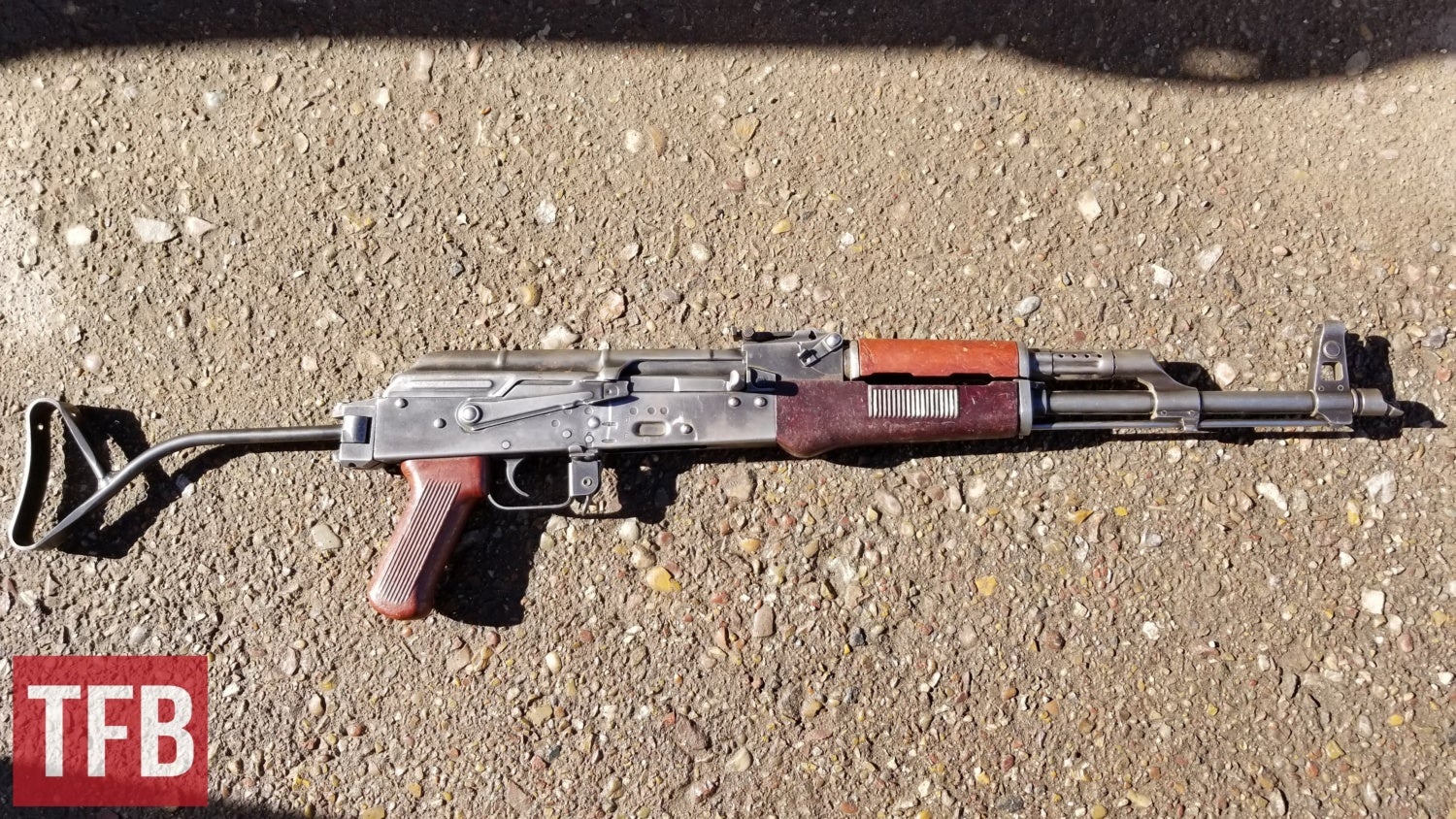
Typical MPi-KMS, with replaced pistol grip
The next iteration of East German AKs is MPI-KM, a copy of the AKM with stamped receiver. Germany received technical documentation in October of 1962, and around 1965 the factories started production. At this point, German engineers decided to replace under folding stock that they took from the Soviets, while the Soviets took the same design from Germans designs a few years before. There were two variants of MPi-KMS with different stocks.
The most common folding stock version was called MPi-KMS(72) and became a great success in the international arms market. Easy to produce, it folded to the right side and allowed the factory to use the same rear trunnion for both fixed-stock and folding-stock guns. Variations of this stock were later used on Romanian, Polish, and Egyptian AKs.
It is not exactly very comfortable, but it is more durable compared to the underfolder and has many advantages, for example in Iraq, local guards would hang it on the wall like a painting, which is pretty difficult to do with underfolding stock.
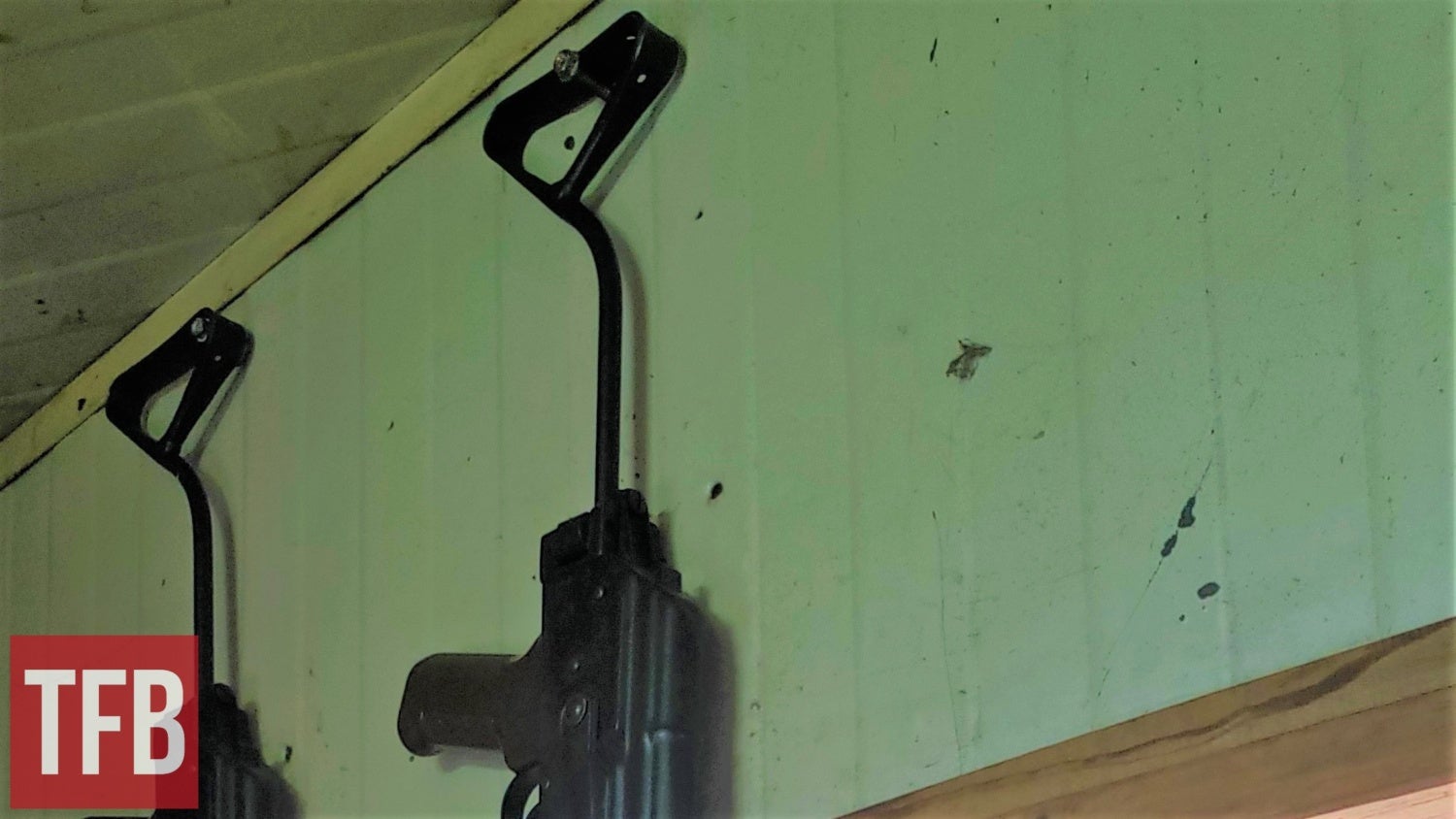
MPi-KMS(72) hanging on the wall in some guard shack in Baghdad
One more difference between DDR AKM and Soviet AKM was the sights, the rear sight for an East German AK was graduated to 800 meters, while the Soviet-made AKM’s sight had settings up to 1000 meters. German engineers also developed a muzzle cap that was regularly issued to soldiers and perhaps the most important upgrade – clip-on night sight inserts, which were not radioactive like Soviet night sights.
In the 80s, German manufacturers had to keep up with the Soviets and developed their version of AK 74, but didn’t really catch on due to the collapse of the Berlin Wall. They developed a lot of interesting guns before DDR was reunited with West Germany, but that is a story for another time.
The overall majority of East German AKs exported worldwide were 7.62×39 rifles, and in Part 2 of this article, I want to share some of my personal experiences with those rifles and talk about unexpected issues I encountered.
 Your Privacy Choices
Your Privacy Choices
